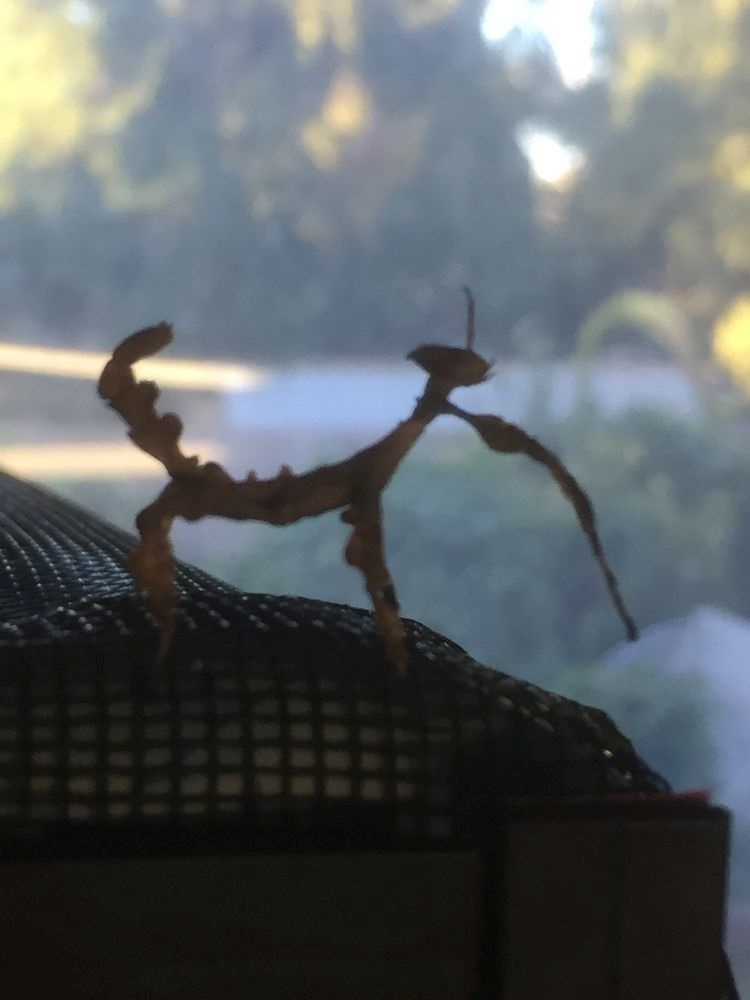Life in the Garden - An Online Activity.
This one hour activity is suitable for Early Stage 1 to Stage 5 students
Effie and Chris are both biologists. Because of this, we have a garden set up to encourage biodiversity, and a variety of species we maintain in a purpose built room. Because we are working from our base we can provide a close behind the scenes look at the organisms that we have and those that we collect for the various activities that we usually bring to the school. This means that we can show how we house, maintain and collect organisms.

 The organisms will be live and mostly found in local gardens.
The organisms will be live and mostly found in local gardens.
 We can show them close up with video microscopes.
We can show them close up with video microscopes.
 Students can interact by asking questions.
Students can interact by asking questions.
 We can provide information on how to safely find and observe these animals.
We can provide information on how to safely find and observe these animals.
 Teacher notes about the organisms investigated at that specific session will be provided.
Teacher notes about the organisms investigated at that specific session will be provided.
The content may include:
 Compost and/or freshwater invertebrates and stick insects - discussions on features, requirements and adaptations.
Compost and/or freshwater invertebrates and stick insects - discussions on features, requirements and adaptations.
 Life cycles - Worm farm, Silk worms, Mealworms, Brine shrimp.
Life cycles - Worm farm, Silk worms, Mealworms, Brine shrimp.
 Show how to find tiny invertebrates that live in trees and shrubs, and in ponds.
Show how to find tiny invertebrates that live in trees and shrubs, and in ponds.
 Carnivorous plants.
Carnivorous plants.
 Endangered freshwater fish, and embryology in native fish.
Endangered freshwater fish, and embryology in native fish.
 Aquaponics utilising plants/vegetables as water filters in a system growing fish.
Aquaponics utilising plants/vegetables as water filters in a system growing fish.
We will modify this session to suit the outcomes for students in different stages. This activity supports Knowledge and Understanding Outcomes:
STe-8NE: A student identifies the basic needs of living things.
ST1-10LW: A student describes external features, changes in and growth of living things.
ST1-11LW: A student describes ways that different places in the environment provide for the needs of living things.
ST2-10LW: A student describes that living things have life cycles, can be distinguished from non-living things and grouped, based on their observable features
ST2-11LW: A student describes ways that science knowledge helps people understand the effect of their actions on the environment and on the survival of living things
ST3-10LW: A student describes how structural features and other adaptations of living things help them to survive in their environment
SC4-14LW: A student relates the structure and function of living things to their classification, survival and reproduction
Online sessions. We ask the school to set up an online session on the meeting platform of their choice (Zoom, Google Meet, Webex), and to invite us as co-hosts or presenters. Students start the session muted and they unmute to ask or answer questions. We ask the class teachers to monitor the students'participation.
We would like to check the connection very briefly, before the date of the sessions, to ensure there are no technical issues.
Price for schools: $200 per session. It is up to you how many students you wish to have in each session. Smaller numbers allow for more interaction for students
Please contact Scienza Viva at any time to discuss your requirements.
